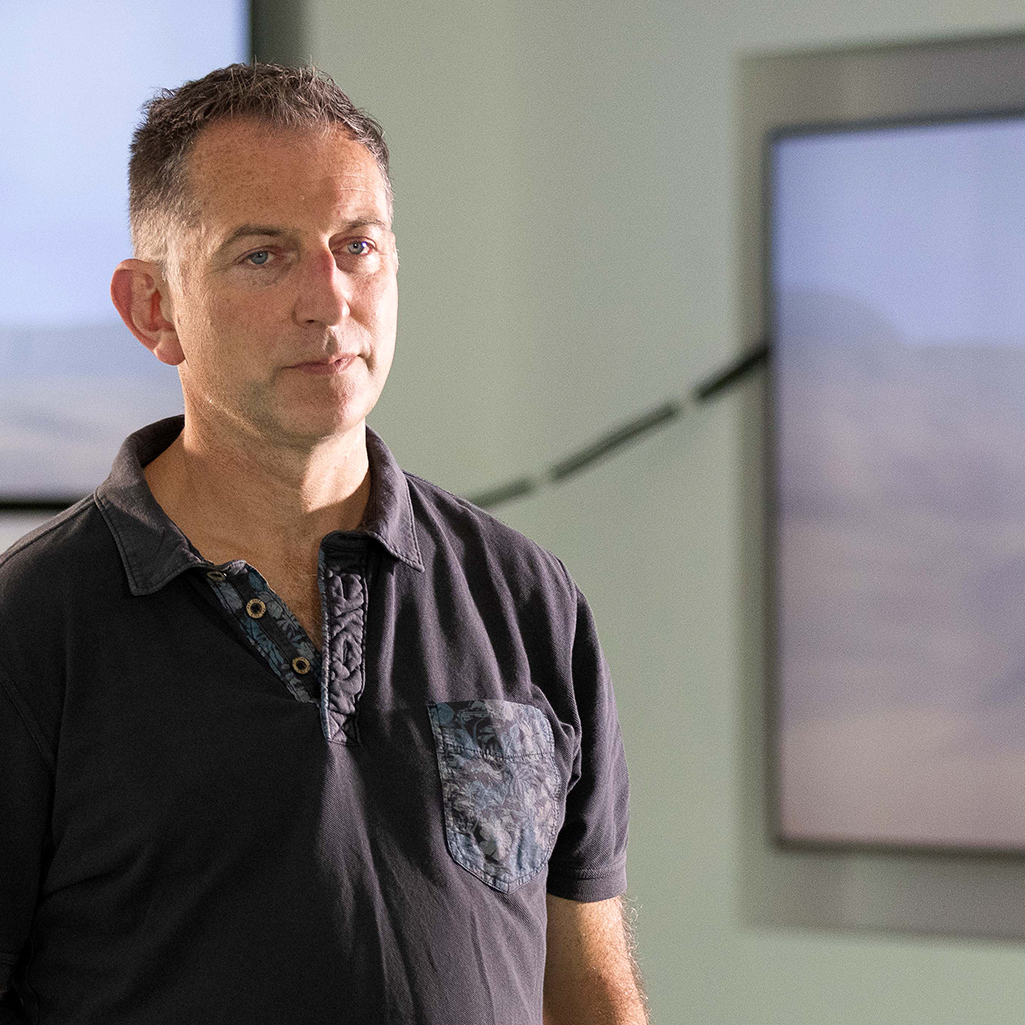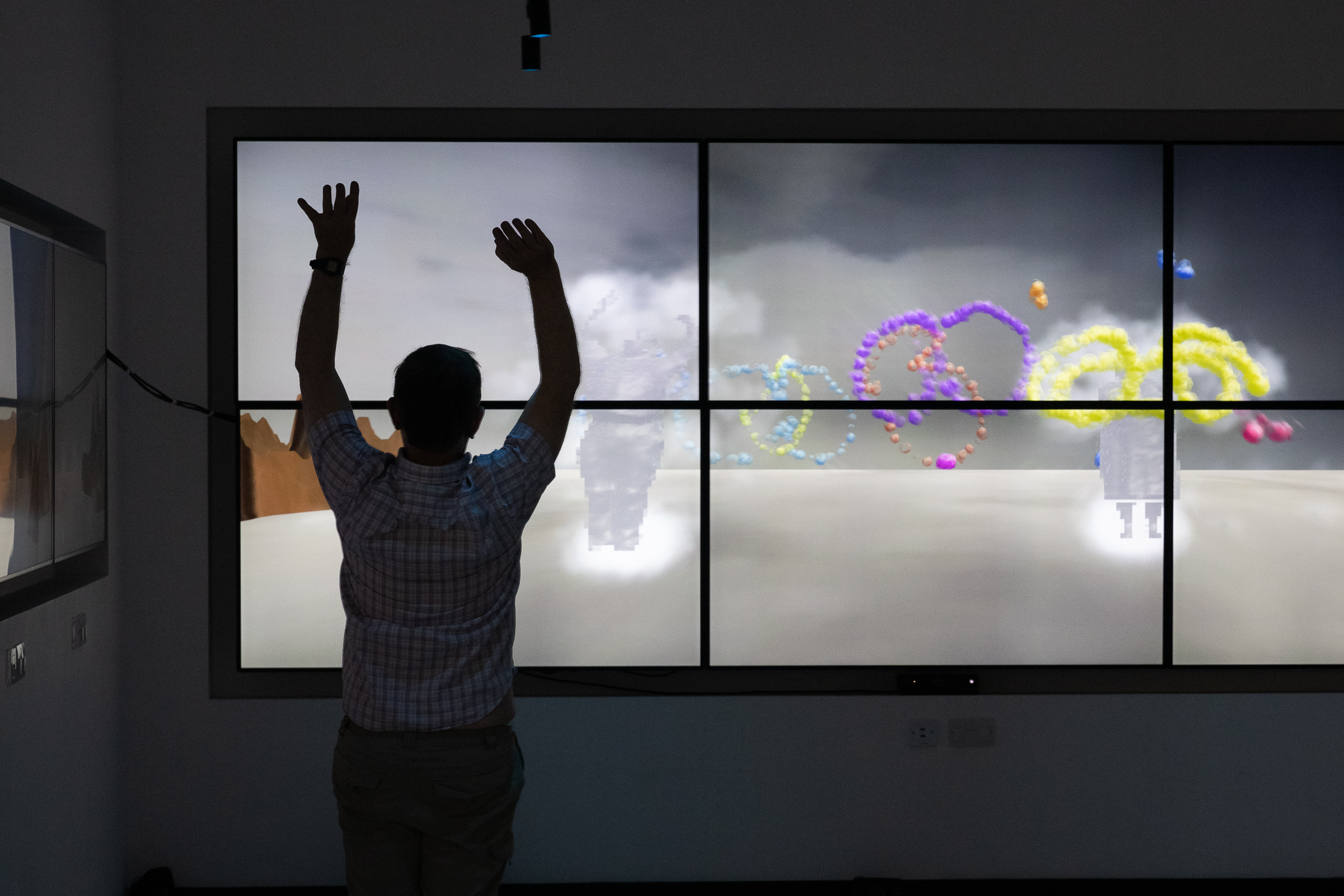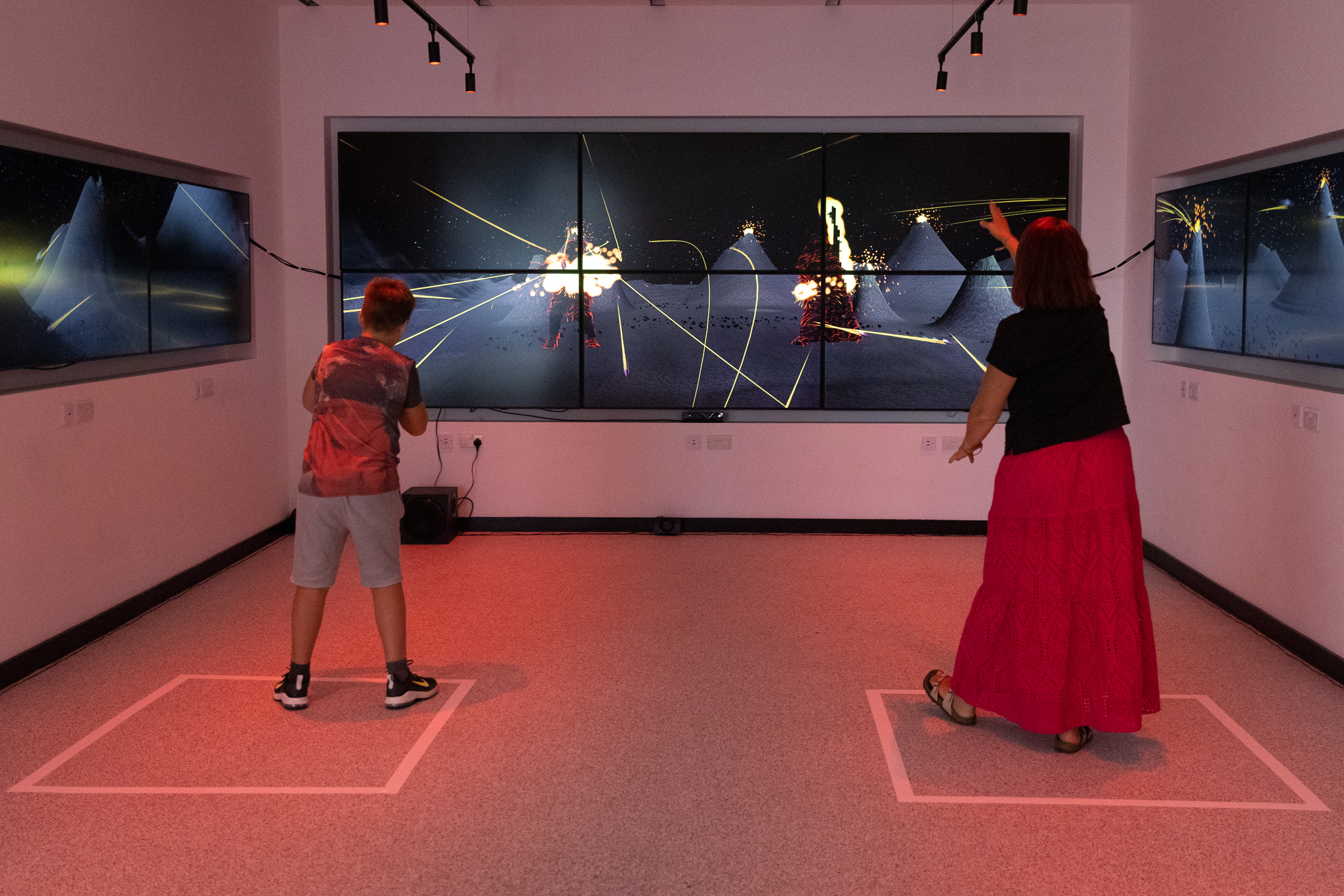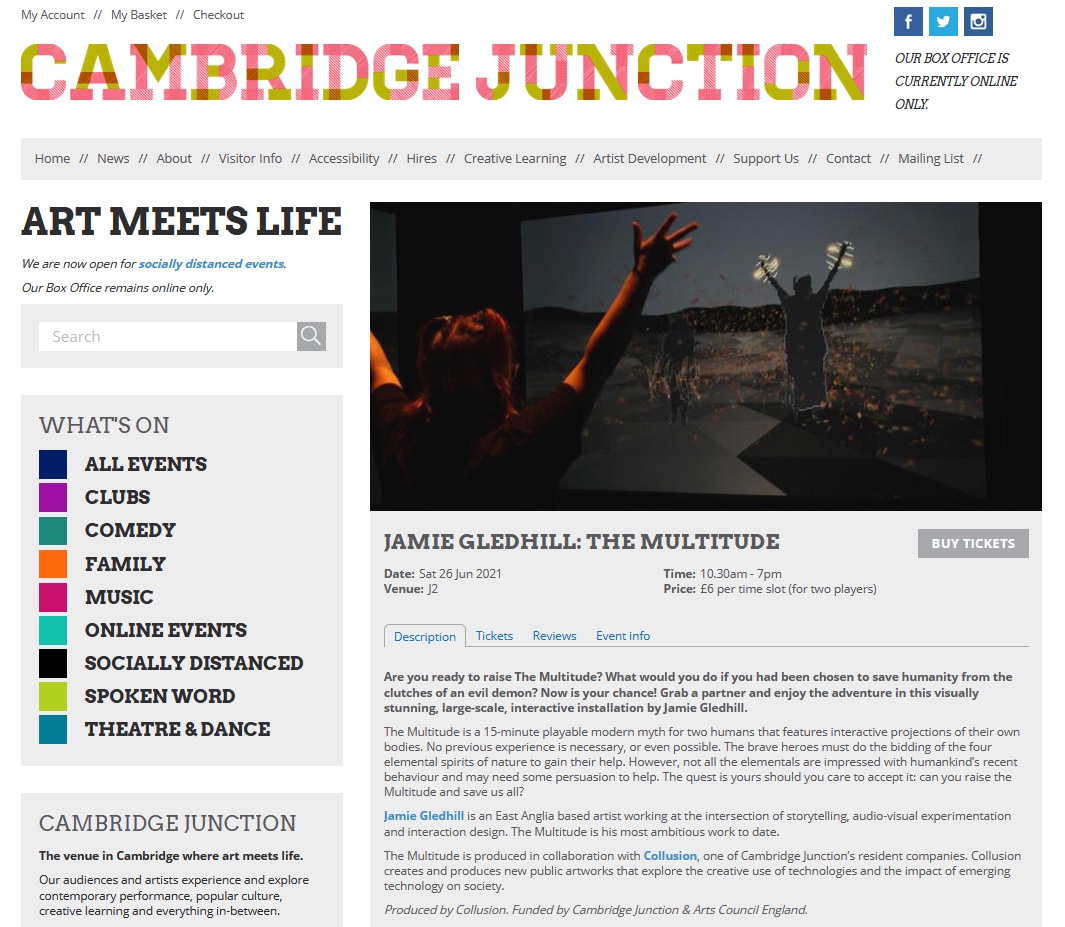Poster
Poster
Raising The Multitude – user-centred design in the making of an interactive artwork
Jamie Gledhill was originally commissioned by Cambridge-based art tech agency Collusion in July 2020 to produce an interactive artwork to be exhibited in a multiple-screen, surround sound environment. The commission provided a useful framework to pursue practice-based research objectives in the field of user-centred design (UCD), specifically how UCD design strategies might be incorporated in the making of a complex interactive artwork. The project went through a significant period of R&D prior to exhibition at The Cambridge Junction, Norwich Arts Centre and Grafton Centre Cambridge in the summer of 2021.
The final format is a 15-minute-long interactive narrative experience for two ‘players’ using whole body interaction, achieved through the Microsoft Kinect sensor, created using the Unity game engine.
Achieving confidence that a complex project will function technically, experientially and be of artistic merit is a huge challenge for producers and artists. An iterative creative development process combined with UCD practices drawn from digital design industries has strong potential to mitigate risk and is therefore worthy of serious investigation.
Key UCD strategies employed in making ‘The Multitude’ include the adoption of design principles as described in Don Norman’s ‘The Design of Everyday Things’, structured observation of in-situ user testing, qualitative data capture in the form of participant interviews and an evaluative survey.
Through the integration of UCD design strategies, the efficacy of the artwork has been validated, potential improvements have been identified, prioritised and implemented as required.

Jamie Gledhill
Norwich University of the Arts
Biography−
Jamie Gledhill is an East Anglia based Digital Artist and a Lecturer at Norwich University of the Arts where he tutors on the BSc Games Development and BSc User Experience Design courses, both of which he helped to launch. His practice-based research is situated at the intersection of digital narrative, audio-visual experimentation and interaction design. His artworks, which have been shown regionally and nationally, often feature non-contact interaction using devices such as the Kinect, Leap and standard webcam. He has collaborated with a number of UK arts organisations interested in technology including FACT in Liverpool, Metal in Southend and Collusion in Cambridge.
Raising The Multitude – user-centred design in the making of an interactive artwork
Gallery








The Multitude Documentary
The Multitude R&D
The Multitude Web Promo